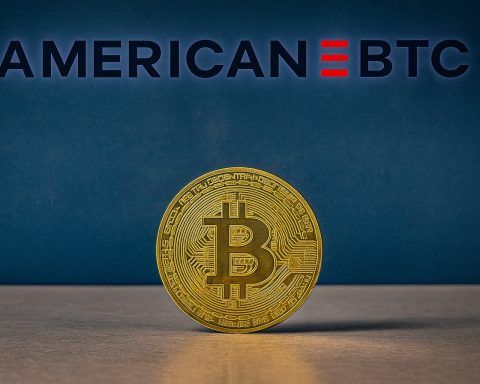Walmart has announced a major leadership shake-up at the top of the world’s largest retailer: long‑time chief executive Doug McMillon will retire next year and hand the reins to John Furner, currently president and CEO of Walmart U.S. [1]
The move marks the most significant leadership transition at Walmart in more than a decade and comes as the company leans hard into artificial intelligence, omnichannel retail and global growth — all while navigating political pressure over prices and tariffs. [2]
What Walmart Announced Today
According to the company’s press release and multiple financial news outlets, Walmart’s board has approved a carefully staged handover. [3]
Key details of the transition:
- Doug McMillon, 59, will retire as president and CEO on January 31, 2026. [4]
- John Furner, 51, will become president and CEO of Walmart Inc. on February 1, 2026. [5]
- Furner has also been elected to Walmart’s board of directors with immediate effect. [6]
- McMillon will remain on the board until the next annual shareholders’ meeting and will serve as an advisor to Furner through Walmart’s 2027 fiscal year, ensuring continuity at the top. [7]
- Walmart plans to name Furner’s successor as CEO of Walmart U.S. before the end of fiscal 2026. [8]
In a brief dispatch, Reuters noted that Walmart shares fell around 2% in pre‑market trading after the announcement, a typical reaction investors often have to big leadership changes, even when a transition is orderly and expected. [9]
The leadership news also lands just days before Walmart is due to host its third‑quarter earnings call on November 20, 2025, an event McMillon will still lead alongside CFO John David Rainey. [10]
Why John Furner Is Walmart’s Next CEO
Walmart’s board opted for continuity by elevating an insider with deep roots in the company.
A “lifelong Walmart” story
Furner’s career closely mirrors McMillon’s in one important respect: he also started on the front lines.
- He joined Walmart in 1993 as an hourly associate in Bentonville, Arkansas.
- Over three decades he has held roles across store operations, merchandising, sourcing and international, including senior posts in Walmart China. [11]
- From 2017 to 2019 he served as president and CEO of Sam’s Club, delivering 11 consecutive quarters of positive comparable sales and membership growth. [12]
- Since 2019, Furner has been president and CEO of Walmart U.S., leading more than 1.5 million associates and overseeing roughly 4,700 U.S. stores plus the digital and supply chain network. [13]
- He also chaired the National Retail Federation’s board from 2022 to 2025, underscoring his profile across the broader retail industry. [14]
Walmart chairman Greg Penner praised Furner as “the right leader to guide Walmart into our next chapter of growth and transformation”, highlighting his 30‑plus years across all segments of the business and his track record running Walmart U.S. during rapid digital change. [15]
Built for an AI‑driven retail era
The timing of Furner’s promotion is deeply tied to technology and AI.
- Under his leadership, Walmart U.S. has accelerated store‑fulfilment e‑commerce, integrating curbside pickup, delivery and marketplace operations. [16]
- Furner has been a visible champion of AI and workforce upskilling. Earlier this year he fronted Walmart’s partnership as a launch partner for OpenAI’s Jobs Platform and AI certification program, bringing free AI training into the Walmart Academy for U.S. frontline and office associates. [17]
“We know the future of retail won’t be defined by technology alone — it will be defined by people who know how to use it,” Furner said when announcing the OpenAI partnership, framing AI as a tool for empowering workers rather than replacing them. [18]
That philosophy dovetails neatly with McMillon’s own recent message at business and workforce conferences, where he has warned that AI will change virtually every job at Walmart while insisting the company must invest heavily in training and support rather than simply cutting roles. [19]
Doug McMillon’s Legacy: A Decade of Reinventing Walmart
Doug McMillon became Walmart’s fifth CEO in early 2014, after joining the company as a teenager in the 1980s. [20]
Over more than a decade at the top, he presided over one of the most dramatic transformations in the retailer’s history.
From low‑price giant to omnichannel powerhouse
When McMillon took over, Walmart was under intense pressure from Amazon and nimble discount competitors. Early in his tenure, he made a series of controversial but ultimately pivotal bets:
- Large investments in wages, training and benefits for frontline workers, reversing years of criticism about low pay and limited career paths. [21]
- Billions of dollars poured into e‑commerce, automation and supply chain modernization, including using stores as local fulfilment hubs and building out grocery pickup and same‑day delivery. [22]
- Ambitious goals on sustainability and emissions, including Project Gigaton and large‑scale adoption of energy‑efficient technology across the fleet. [23]
Those decisions were painful at first — share prices slumped when Walmart announced wage hikes in 2015 — but have aged well. A recent analysis from JUST Capital notes that investing in wages, education and benefits has been a key pillar of Walmart’s improved performance and that shareholder returns are up roughly 490% since 2015, comfortably beating the broader market. [24]
Axios points out that Walmart’s stock has roughly quadrupled since McMillon became CEO in late 2013, while the company scaled into a tech‑enabled retail platform serving 270 million customers a week in 19 countries. [25]
People‑first AI as a capstone
In his final years as CEO, McMillon increasingly framed Walmart’s strategy around “people‑first AI”:
- He has repeatedly told audiences that “every job we’ve got is going to change in some way” due to AI and automation — from cart pushers to technologists and senior leaders. [26]
- Instead of promising zero job losses, McMillon has focused on reshaping roles and rapidly reskilling a 2.1‑million‑person workforce, using initiatives like Walmart Academy and the OpenAI partnership to build new capabilities at scale. [27]
Seen in that light, today’s transition is less a pivot away from McMillon’s agenda and more a handoff to a leader steeped in the same philosophy — but who will be in the seat as AI and automation move from pilot projects to everyday reality in stores and warehouses worldwide.
Why This Transition Matters Now
A crucial economic and political moment
Axios framed the move as arriving at a “crucial economic moment” for Walmart. Furner will inherit a company at the center of several overlapping pressures: [28]
- Tariffs and trade tensions that can ripple directly into shelf prices.
- Persistent consumer anxiety about grocery and household costs, even as inflation has cooled from its peaks.
- Intensifying scrutiny from U.S. politicians who increasingly see Walmart as a lever for affordability and labor standards nationwide.
Balancing those forces while continuing to invest in technology, wages and sustainability will require the kind of operational fluency and political instinct that often only comes from growing up inside the organization — something both McMillon and Furner share.
A bet on continuity, not disruption
Unlike some companies that turn to outsiders during inflection points, Walmart is doubling down on internal talent:
- Furner has spent his entire career inside Walmart.
- He has already been running its largest operating segment — Walmart U.S. — through the pandemic, supply chain chaos and inflation shock. [29]
- The board has designed a long transition runway, with McMillon staying on the board into mid‑2026 and advising Furner until FY2027. [30]
For investors, that structure signals that Walmart isn’t seeking an abrupt change of direction. Instead, it is effectively saying: the strategy is working, the model is evolving, and the company wants the next CEO to accelerate the existing playbook rather than rip it up.
What It Means for Investors, Customers and Employees
For investors
In the very short term, leadership uncertainty often means volatility. The early 2% dip in Walmart’s share price following the news reflects that classic “wait and see” response. [31]
But several factors may reassure shareholders over the medium term:
- The core strategy — omnichannel, data‑driven retail with heavy AI investment — remains intact.
- Furner has a proven record driving U.S. sales growth and modernizing stores while keeping costs in check. [32]
- Walmart is still throwing off enormous cash flow: fiscal 2025 revenue hit $681 billion, with operations spanning more than 10,750 stores and roughly 2.1 million associates worldwide. [33]
Upcoming earnings on November 20 will be the first big test of how Wall Street digests the leadership shift and the company’s guidance for 2026 and beyond.
For customers
Shoppers are unlikely to notice any immediate change — the rollback signs won’t vanish overnight.
If anything, the transition could accelerate:
- More AI‑powered shopping tools, personalised recommendations and streamlined search and checkout experiences. [34]
- Faster delivery and pickup as Walmart continues to lean on its stores as mini‑fulfilment hubs. [35]
- Continued emphasis on “everyday low prices” as politicians and consumers keep pushing on affordability.
For associates
For Walmart’s 2.1 million employees, leadership continuity — and the choice of another former hourly associate as CEO — sends a clear message about culture. [36]
Both McMillon and Furner have tied their leadership brands to:
- Raising wages and skills over time, not just trimming headcount. [37]
- Expanding education and AI training to help workers move into higher‑value roles as automation spreads. [38]
There will still be anxiety — McMillon himself has acknowledged that job composition at Walmart will change dramatically over the next three years — but the structure of today’s transition suggests the company wants to manage that shift with the same “people‑first AI” ethos it has been publicly championing. [39]
What to Watch Next
Over the coming months, several milestones will give a clearer picture of how this CEO change will play out:
- November 20, 2025 – Q3 earnings:
- How does Walmart talk about the transition with analysts?
- Does guidance change as it prepares for Furner’s tenure? [40]
- Announcement of the next Walmart U.S. CEO:
- This role has become the de facto staging ground for the group CEO job.
- The choice here will say a lot about succession planning after Furner.
- AI and automation roll‑outs in 2026:
- Expect more AI‑driven tools in stores, back offices and distribution centers, building on initiatives like AI training with OpenAI and expanded automation in logistics. [41]
- Policy and pricing debates:
- With inflation, tariffs and election‑year politics all touching retail prices, Walmart’s stance under Furner will be closely watched in Washington and in households alike. [42]
For now, Walmart is signalling stability: the architect of its last decade of reinvention will remain in the wings, while a seasoned lieutenant steps onto center stage to lead the next, AI‑powered chapter of the retail giant’s story.
References
1. www.reuters.com, 2. www.axios.com, 3. www.businesswire.com, 4. www.businesswire.com, 5. www.businesswire.com, 6. www.businesswire.com, 7. www.businesswire.com, 8. www.businesswire.com, 9. www.reuters.com, 10. www.businesswire.com, 11. corporate.walmart.com, 12. corporate.walmart.com, 13. corporate.walmart.com, 14. corporate.walmart.com, 15. www.businesswire.com, 16. diginomica.com, 17. retailtechinnovationhub.com, 18. retailtechinnovationhub.com, 19. businesschief.com, 20. en.wikipedia.org, 21. en.wikipedia.org, 22. stratechery.com, 23. startuptalky.com, 24. justcapital.com, 25. www.axios.com, 26. businesschief.com, 27. justcapital.com, 28. www.axios.com, 29. corporate.walmart.com, 30. www.businesswire.com, 31. www.reuters.com, 32. corporate.walmart.com, 33. www.businesswire.com, 34. www.businesswire.com, 35. www.wsj.com, 36. www.businesswire.com, 37. justcapital.com, 38. retailtechinnovationhub.com, 39. justcapital.com, 40. www.businesswire.com, 41. retailtechinnovationhub.com, 42. www.axios.com










